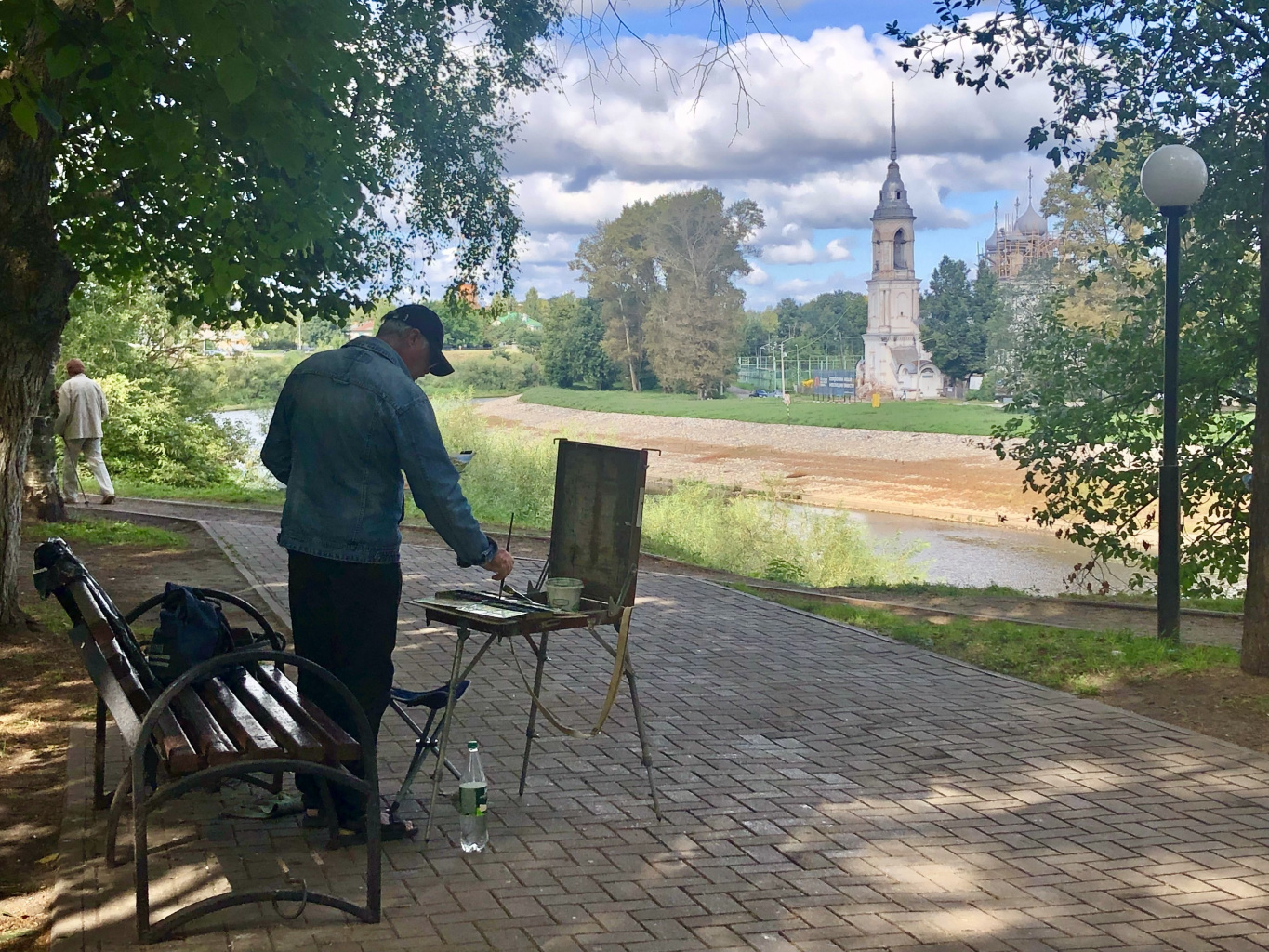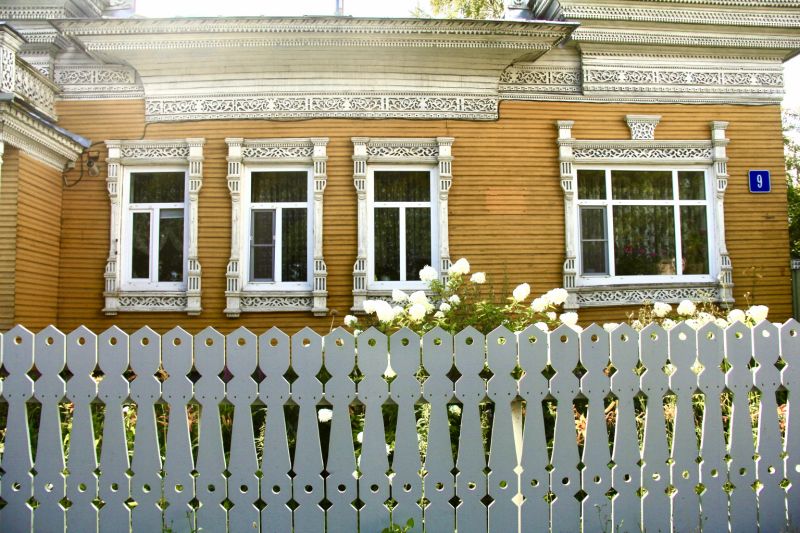An EcoTourism EXPERT’s correspondent visited the ancient city of the Russian North, the memory of which immediately brings a song line to mind. ‘Where has he been to before? To Vologda-gda-gda-gda, to Vologda-gda’.
There is a reason in choosing Vologda for the song. The city, glorified in the famous song, was created from the peculiarities of national color and identity, as well as great historical and cultural treasures. Vologda is one of the largest cities in Russia where ancient monuments of stone and wooden architecture are well preserved. Experienced tourists have a lot of attractions to see and visit in the city, including churches, monasteries, unusual museums, interesting art objects, and a beautiful embankment.
When we arrived in the city, the Spaso-Prilutsky Dimitriev Monastery was the first building to attract our attention. It looks quite unusual, primarily because the planes of its three towers were painted in very bright colors - yellow, white and orange. One of the oldest and largest monasteries in the Russian North was founded in 1371 by Dimitri Prilutsky, a student of Sergius of Radonezh. In the 1930s, it was used as a transit prison.

The monastery includes a number of architectural monuments. The Assumption Church (16th century) is among them, it was moved from the Alexander Kushtsky Monastery and is considered the oldest surviving wooden tent-shape type church in Russia. There is also the Spassky Cathedral (The Cathedral of Our Saviour, 1537-1542) where the hagiographic icon of Demetrius of Prilutsky, a masterpiece of the Russian icon painting created by Dionysius, came from. The necropolis heavily damaged during the Soviet years preserved the grave of the poet Konstantin Batyushkov who died in Vologda on July 7, 1855.
In the center of the city, there is the Bishop’s Court, also known as the Vologda Kremlin, that consists of churches, palaces, houses and fortress walls built during four centuries (16th-19th centuries).

In the 16th century, Vologda was a major center of the Russian North. It was of particular interest to Tsar Ivan the Terrible, since it was located at the beginning of the most important trade route from the center of the country to the west. The tsar had an idea of turning Vologda into the capital of the oprichnina lands. (‘oprichnina’ is a political and administrative apparatus established by Ivan the Terrible - ed.). And by decree of Ivan the Terrible, preparations began for the construction of the fortress walls and towers of the Kremlin in 1565. But in 1571, something went wrong. For unknown reasons, the tsar suddenly changed his mind, stopped the construction and left Vologda (and he died soon).
By this time, a stone wall and several towers had already been erected. In place of the partially constructed walls, a wooden fort with tent-roofed towers was built.
During the raid of the Poles and Lithuanians in 1612, part of the walls and towers were burned, and they were later restored. By the 17th century, the Vologda Kremlin remained partly stone and partly wooden. It played the role of a defensive fortification, but later on, the fortress lost its significance and gradually crumbled away with age. By the 1820s, the walls and towers of the Vologda Kremlin were dismantled. The structures called the Vologda Kremlin today are actually a fortified complex of the Bishop’s Court of the 17th century that was located within the fortress. From the second half of the 16th to early 20th centuries, it served as the residence of the Vologda bishops and archbishops.

In the summer seasons, fun for children - riding cars - is organized in Vologda’s Kremlin Square. The pleasant entertainment is not free, of course, but it is quite popular. The car ‘parking lot’ is located next to the St. Sophia Cathedral, which was also founded under Ivan the Terrible, in 1568. With its simple and calm beauty, this cathedral immediately captures the travelers’ attention. By the way, the St. Sophia Cathedral looks like the Assumption Cathedral of the Moscow Kremlin and is considered an outstanding monument of the Russian national architecture. In the second half of the 17th century, the St. Sophia Cathedral was painted by the Yaroslavl painter Dmitry Plekhanov and his 30 assistants. Its entire western wall is occupied by the Last Judgment scene, which is considered the largest in Russia. This composition is considered the painter’s success.
The paintings in the St. Sophia Cathedral were restored several times. We were amazed by the rich colors of the frescoes on the walls, vaults and domes and their good condition. The paintings of the St. Sophia Cathedral are the treasures of the Russian national culture.
Over its long history, the St. Sophia Cathedral has survived raids, devastation, fires, and repairs. The building regained its original appearance after the restoration started in 1959. It is best known for its strict simplicity that was characteristic of the northern school of architecture several centuries ago. Once here, people are in awe of this power of the living history.

Another iconic building of the Vologda Kremlin is the bell tower. It is the highest building in Vologda (78.5 m) and one of the oldest architectural monuments of the 17th-19th centuries. Using the stairs inside the bell tower, visitors can climb to the very top where they can enjoy a beautiful panoramic view of the Vologda River.
The Zasetskys’ House is the oldest wooden building in the city. This is a mansion with an additional storey built in the 1790s and significantly rebuilt at the end of the 19th century. The house belonged to the representatives of the old noble family of the Zasetskys. The most famous of them is one of the first local historians of Vologda and the author of the first book about the city, Alexey Aleksandrovich Zasetsky (1717-1784). He was the first to introduce the date that is officially considered the year of founding the city of Vologda, 1147. However, today many scientists believe that no reliable information has been found about the founding date of the city.
Experts attribute the carved decorations of the mansion to the period of the late 19th-early 20th centuries. The Zasetskys’ House is a monument to the Vologda wooden architecture. When we were in Vologda, the house was under restoration and surrounded by a fence, and we were only able to see part of it. According to open sources, it is planned to have a museum in the house after its restoration and hold wedding ceremonies.
Of course, you can ask if we visited the house with the carved wooden palisade. Of course, we were there. The house is called the ‘Carved Palisade’, it is a Center of Folk Arts and Crafts. On the first floor, there is a small museum where visitors can see national costumes worn by the locals in the old days. There is also a collection of spinning wheels and all kinds of textiles with national ornaments and laces, as well as unusual clay works made by local craftsmen.
On the ground floor, there is a souvenir shop. In fact, this is also a kind of a museum because interesting handmade designer items, including those made of wood and textiles in the northern Russian style, are sold here. These include dishes, children’s toys, Christmas tree decorations, designer clothes, and other items. However, it is unlikely that the prices for some works are attractive but visitors can get an aesthetic pleasure while looking at them.
Next to the Center of Folk Arts and Crafts, there is the Karaulov’s House, another interesting building that is a 19th-century architectural monument in the provincial modernist style. We think that it was much more richly decorated with skillful carvings than the Zasetskys’ House.
Of course, one of the most popular attractions in Vologda is the Lace Museum. Its exhibition is dispalyed in the building of a 19th-century town mansion and shows the development of the traditional artistic craft of the Vologda Region and global trends in the development of lace making. The visitors can get to know about the time when this art appeared (17th-18th centuries) when laces were made from gold and silver threads and were popular about the European lace centers (in Germany, France, Poland, Slovakia, and Spain). There are exhibits at the Museum that show the laces in peasant costumes and ethnographic textiles, lace items made in the 1920s to 1940s, and original works by contemporary designers and craftsmen.
The Vologda Kremlin and the Lace Museum are part of the Vologda State Museum-Reserve, which deserves special mention. Its collection includes many historical, cultural and natural monuments. The museum has collections of the ancient Russian paintings, wooden sculptures and carvings of religious worship, fine arts, including world-famous iconographic rarities. Collections of fabrics, spinning wheels, painted furniture used by peasants, cut birch-bark items, tools for agriculture, cattle breeding, and various crafts are also displayed at the museum. The collection contains rare examples of artistic carved furniture from the early 18th century, as well as sets of furniture from the 19th century collected from the Vologda mansions.
The Vologda State Museum-Reserve has collections of ceramics, numismatics, as well as works of art made of precious metals, stones and pearls. The archaeological fund contains a lot of materials characterizing the periods of the Mesolithic, Neolithic, High Middle Ages, and the materials from urban excavations.
The nature department occupies as many as eight halls. It features large natural science collections, including the zoological, botanical, geological, paleontological, and entomological ones. The museum’s collections represent most of the animal species living in the Vologda Region. The section of natural source anomalies is of great interest. The earliest herbarium from the turn of the 19th and 20th centuries, rare species of flora of the Vologda Region, are of particular scientific and historical value.
The collection of the museum-reserve also contains tusks, teeth and bones of a mammoth, woolly rhinoceros, ancient bull, and horse. Some of the most valuable exhibits are the vertebra and rib of a pareiasaurian and a tooth of inostrancevia found in 1899 on the Small Northern Dvina River, as well as a plaster cast of a reconstruction model of a pareiasaurian.
The city center is decorated with art objects that represent the famous symbols of Vologda, for example, a bench with the inscription ‘Let’s sit and relax’ on the river embankment or a monument to the letter ‘O’, because the prevailing sound [ɔ:] is a peculiarity of the local dialect. Right in the middle of the street, there is a mysterious ‘Door to ...’, where tourists love to take pictures, and it’s up to everyone’s imagination to think where this door leads to.
The Vologda Park also called the Kremlin Garden is a very idyllic place. People can take a leisurely stroll in the shade of weeping willows, or sail by boat or catamaran on the pond. We were glad to see the responsible attitude towards nature in the Vologda Park as we saw vending machines where visitors can buy the right food for urban birds. Here, they can also find tips on what feed visitors can give to birds to help them and not do them any harm.
There is also an unusual Museum of Entertaining Sciences in Vologda where there are many things interesting to young and adult visitors. Our friends and their children went on an excursion to the Museum and they watched a chemical show, studied the forces of gravity and friction, had their ‘notes with everything bad’ burned in acetone and ‘set their palms on fire’. Children and adults were absolutely delighted with the program.
It is simply impossible to mention all the unusual places in Vologda. It’s better to come and choose the sightseeing attractions and routes you like. And if you want to properly immerse yourself in the history and culture of the Russian North, one day in this interesting city is not enough at all.


